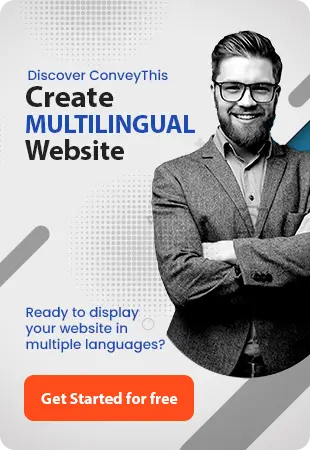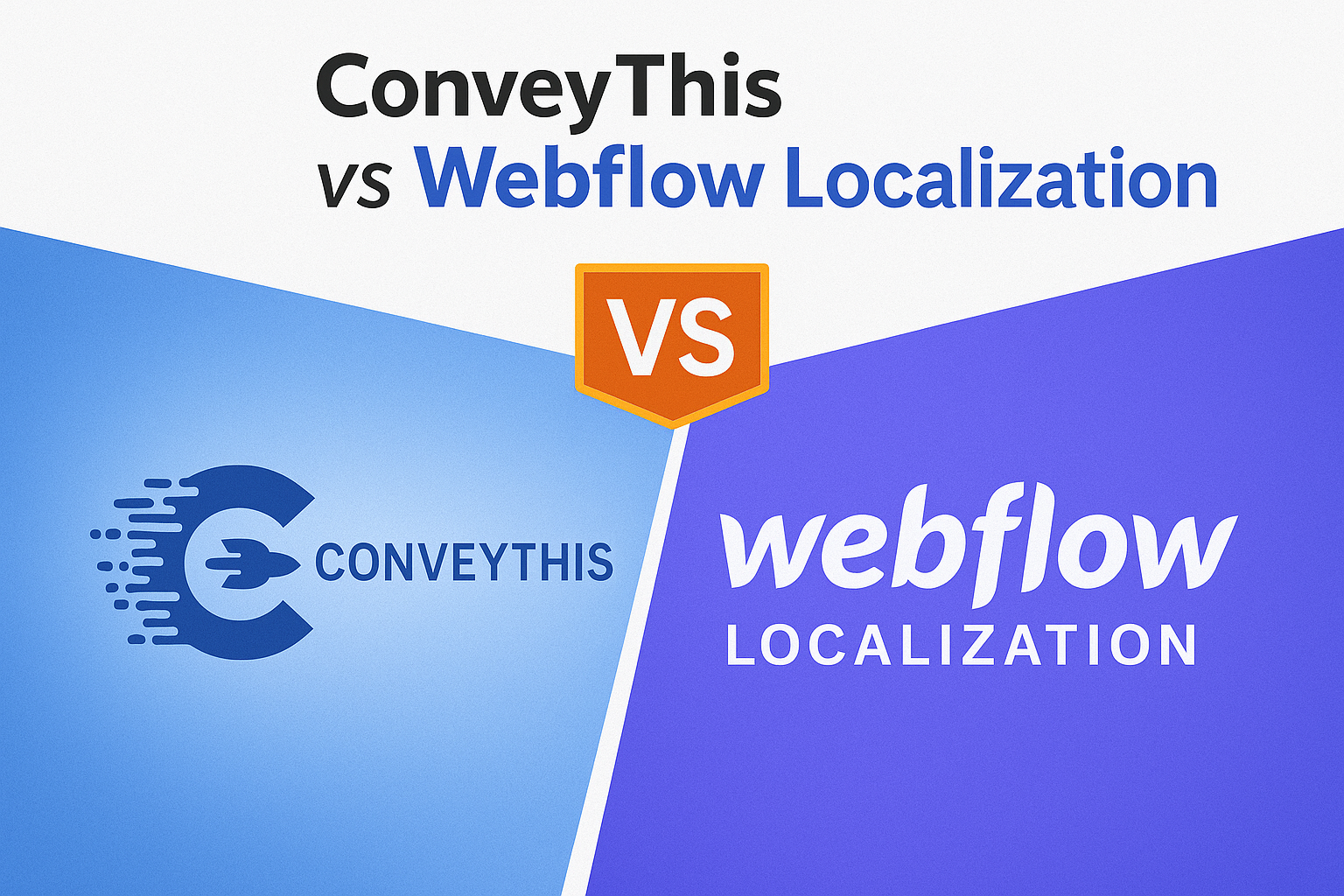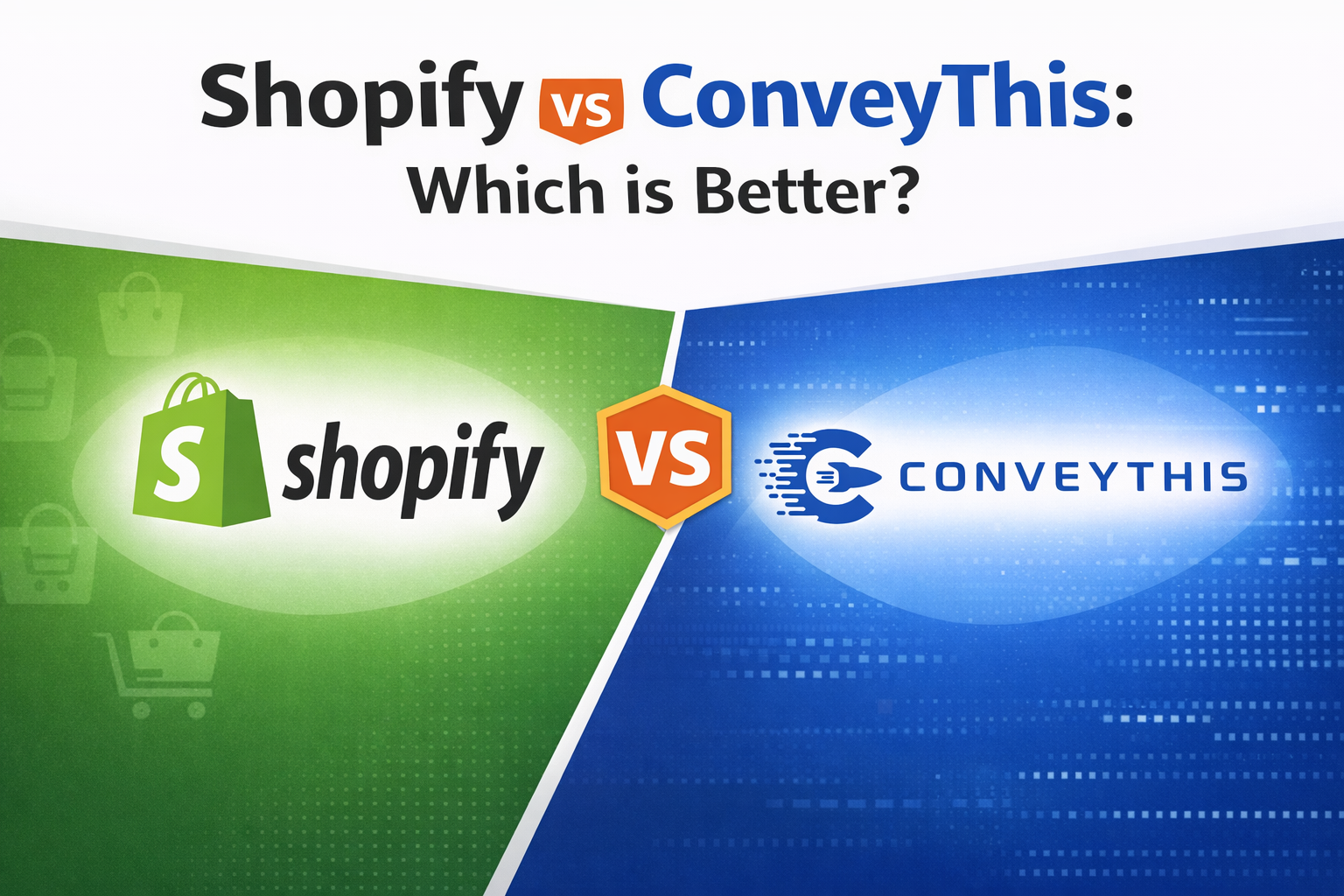Media translation: How to translate the images on your website
It is necessary to always recall that there is more to translation than rendering only the texts on your website in another language. When we talk about web contents, it include videos, images, graphical illustration, PDFs and all other forms of documents. Hence, a valid localization will take good care of these so that visitors of your website will have a wonderful experience exploring your site in any language of their choice.
When you fail to keep these ‘contents’ in mind when translating, your customers and potential customers may decode a wrong message from your page and this will affect the sales and growth of your business. This is the reason translation of all unit is essential.
Let us discuss why it is necessary to translate media, how to correctly do it, and how you can best get it done using ConveyThis as solution to your website translation. Media translation is about for you.
Reason You Should Translate Your Website Media Content
You would have noticed that is some of our recent articles, we emphasize personalization. It is worth the emphasis because it is a key factor to providing a convincing offer. If you are thinking of how to increase customer’s engagement with your products and services as well as increasing brand cognizance then translation of not just the texts only but also of images and videos will go a long way to achieve such.
Translate the texts on your website first, then wrap it up with translation and localization of other contents such as images, videos, documents etc.
Is There A Need For Media Translation?
YES. Once you are able to translate the texts on your website to a language understandable to speakers of other languages other than the language of the original texts, then images and video contents should not be exempted. Interestingly, it would speak well of your brand if visitors can have the same introductory video that is in the source language translated in the languages of their hearts. The corresponding translated videos should be on each of the landing pages of each of the languages.
Also, when you have your media translated in the languages of your website, it is an indicator that you cherish and respect the cultural variations. For example, if you have an international meat selling stores in the Western world and Middle East world, you can have a catalogue of meats for sale displayed on your website including pork for the western world but you will want to remove pork and replace it with a meat considered acceptable by people in the Middle East region. This will show that you are sensitive to their concerns and you are adapting your contents to the targeted audience by offering your audience a personalized experience.
How to practice Image Translation
Before you can translate your images from one language to the other, there are ways to go about it. There are factors to keep at heart. These are:
The image file on its own: if you are using another image other than the one in the original language or you are using one with alterations for another language, first of all, you should use different URL for each of image versions. Then, ensure that the file name is localize for the sole purpose of SEO.
Image with texts: if your image is having text on it, it is very important that such text be translated into the language of the target audience for them to understand what message is been passed. Scalable Vectors Graphics (SVG) files that are translatable can help ease and simply this process.
Image alt-text: when it comes to SEO, one thing that plays an important role is the metadata. Same is the case with images. Translate your image metadata. When you do this, you will notice an increase in gaining access to your web contents.
Image link: if you have certain image on your website that when you click the image it takes you to or links you with another page of your website, then you should make a change to the image’s link on the basis of the language of the visitor. This will enhance the user’s experience.
One thing you should be careful of is that when you use images on your website, try to refrain from having text inscribed on the images. However, you can maintain text over the images using such text as tag. The use of such text will make it easy to translate the word content at any time while using the same image for different languages.
Translate Your Website Media with Conveythis
Media translation is a paramount feature when it comes to personalization for customers. Also, it certainly influences multilingual SEO. Therefore, when considering media translation, you should find a solution that handles not just the text translation but translations of all components found on your website. Interestingly, such solution is not far-fetched. ConveyThis is a translation solution platform that can make this be achieved in a smooth, simple and easy way.
If you want to enable media translation, you need to first login to your ConveyThis dashboard. From there you can go to settings. You will find general as a tab below having an icon with the cog symbol. Select it and then scroll a little bit downward and check Enable Media Translation. After you have done that, click Save Changes. Then and there you can commence your translation task.
Using Conveythis Dashboard for Media Translation
To translate your media files such as images, videos, PDFs etc. using your ConveyThis dashboard, just go to directly to the tab known as Translation. Select the language pair you want to inspect. Then a list of your translations will surface as you can see below. Then to translate the media, filter the list by selecting media in the filter option that can be found at the top right corner of the page.
What you will see next is list of files that are media. And where you hover over this list with your mouse, you will find a preview of the image each URL represents as you can see in the image below. Originally, the image will retain its initial form because the URL is yet to be changed. Now, to change the image to appear in another language version of the website, just make a change to the image URL that is on the right-hand column. This works for any image on the website whether it is an image hosted on the web or one uploaded on your CMS.
What you will see next is list of files that are media. And where you hover over this list with your mouse, you will find a preview of the image each URL represents as you can see in the image below. Originally, the image will retain its initial form because the URL is yet to be changed. Now, to change the image to appear in another language version of the website, just make a change to the image URL that is on the right-hand column. This works for any image on the website whether it is an image hosted on the web or one uploaded on your CMS.
Try and check your website immediately you are done with saving the new URL. You will observe that when you view the updated page in the translated language there is now a new image appearing on that page. Ensure that your image alt-text is verified for the sake of image SEO. If you want to do this, return to the step where you filtered with media and now choose Meta in place of media. Then scroll a little bit down to verify how the alternative text is been translated. However, you can make adjustment if you are not satisfied with what has been translated. Although when you use ConveyThis, your image alt-text gets translated automatically yet it is always good to have a recheck to be sure your page is fully SEO optimized.
Using Visual Editor Tool to Translate Media
ConveyThis also provides another option apart from translation from the dashboard. The option is translating through our built-in Visual Editor. With the visual editing tool, you can manually edit your translation while previewing your website. If you will like to use this tool, go to your ConveyThis dashboard, select the translation tab and then click Visual Editor tab that is found on the page. After doing this, you will land on the visual editor page. Once you select Start Editing, you will find yourself on the homepage. Here you can see all translatable files highlighted. You will notice a pencil icon beside each of the files. To translate images, click on the icon beside each of the highlighted images. Then change the URL of the translated language.
Click OK and all is set.
Please know that the example used in this articles as regards images can also be applied to other media files. The same method can be used to achieve translating other forms of media such as videos, graphical illustration, etc. on your web pages.
Conclusion
It is estimated by invespcro that globally there are 67% of consumers shopping online around the world. This shows that businesses will have to compete with one another to thrive successfully. Businesses that make special efforts are the only ones that will earn most gains. And one of such special efforts is media translation. It will massively better your business and help your earn more international recognition. It will help you generate more traffic on your website, inviting more customers and potential customers, and boosting your market sales.
Although, media translation used to be a heavy task but you can be rest assured that with smart and simple solutions such as ConveyThis will make the translation and localization of your website a simple, easier and fast.
Then, should that be the case, you can subscribe to ConveyThis and enjoy translation of your media.
Translation, far more than just knowing languages, is a complex process.
By following our tips and using ConveyThis, your translated pages will resonate with your audience, feeling native to the target language.
While it demands effort, the result is rewarding. If you’re translating a website, ConveyThis can save you hours with automated machine translation.
Try ConveyThis free for 3 days!
 No card details
No card details



